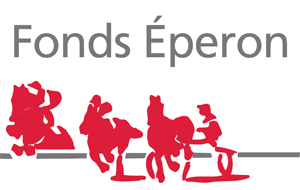An inventory of the draught horse network in France
Draught horses in France :
Population
- Nearly one in four equines in France is a draught horse or donkey.
- Almost 11,000 breeders have draught horses (purebred) in France.
- The population of «draught» horses (not belonging to a studbook) is decreasing, partly replaced by «registered» horses.
- The average size of draught horse stud farms is 2.4 mares. (national average: 2.15 mares)
Geographic distribution
They can be found throughout France, but in larger numbers in agricultural and/or mountainous areas:
- in Aquitaine, Champagne-Ardenne, Limousin, Midi-Pyrénées and Rhône-Alpes this category represents almost a third of the regional equine populations;
- in Auvergne and Franche-Comté, they represent almost half of the regional equine populations.
Reproduction
- Stallions
2,337 active draught stallions to 31,242 coverings (i.e. an average of 13.4 coverings per stallion).
Draft stallions (national and private) represent almost 1/3 of active stallions in France.Draught stallions represent more than half of active national stallions.
Over the last three years, purchases of draught stallions by the national stud farms have been relatively stable: the majority from the breeds with the largest populations (Comtois, Breton and Percheron) and much fewer, hardly any in fact, in the widely threatened breeds: Boulonnais and Poitevin.
Certainly, in terms of numbers, there are more purchases of draught stallions than purebred stallions but the purchase price per stallion is much lower.
- Broodmares
Over 27,000 draught mares covered in 2007, representing 28% of all mares covered in France (all equine breeds combined).
In nine French regions, draught mares represent over 1/3 of covered mares, notably in the Auvergne and Franche-
Comté where they represent 63% and 70% respectively (regions where the largest breeders are found). In
these regions, the economic, social and environmental impact of the "draught horse" network is significant!
- Births by breed
- The Auxois, Boulonnais and Trait du Nord draught breeds are in difficulty: their already low broodmare populations continue to decrease. The Poitevin draught breed is stable but with a very low population. Births of Boulonnais and Trait du Nord are regularly and sharply decreasing. These breeds are really under threat today!
- Births of Ardennais and Norman Cobs have fallen slightly.
- The breeds with larger populations are doing better: Comtois, Breton and Percheron. Births fluctuate annually but remain in a constant range and are even rising a little each year.
- Finally, "draught" broodmares and "draught" births are in significant decline due to the national breed associations' desire to favour cant decline due to the national breed associations’ desire to favour the reproduction of pure breeds and the creation of the "registered" category.
- Breeding support
Incentives are paid to breeders by the State, via the national stud farms, in the form of prizes for conformation and trotting competitions for males, year old, two-year-old and three-year-old fillies, and foals, as well as awards for stud approval and a few prizes for use trials.
These represent a total of 19,815 prizes in 2006 (for 20,769 entrants, i.e. 95% of entrants are awarded).
In terms of the number of incentives awarded, draught breeds are ahead of the other breeds, but they are behind purebred horses in terms of the total amount awarded.
Without these awards, draught breeds are doomed to disappearance.
They encourage breeders to raise high quality horses and take part in competitions;thus encouraging real competition at different levels: local, departmental, regional and even national, and contribute to the social and economic development of French rural areas.

 Contact
Contact

